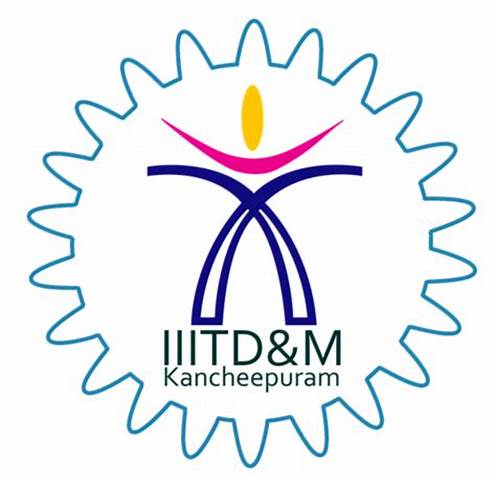
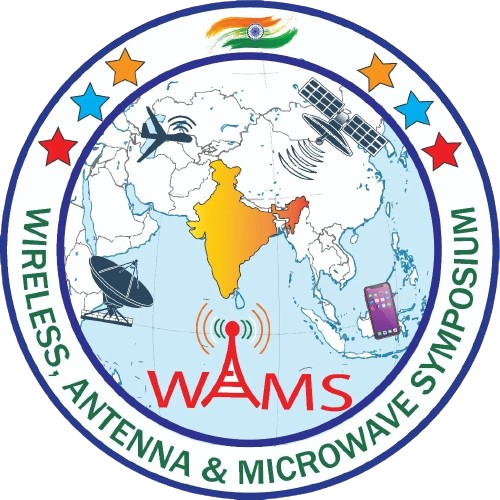
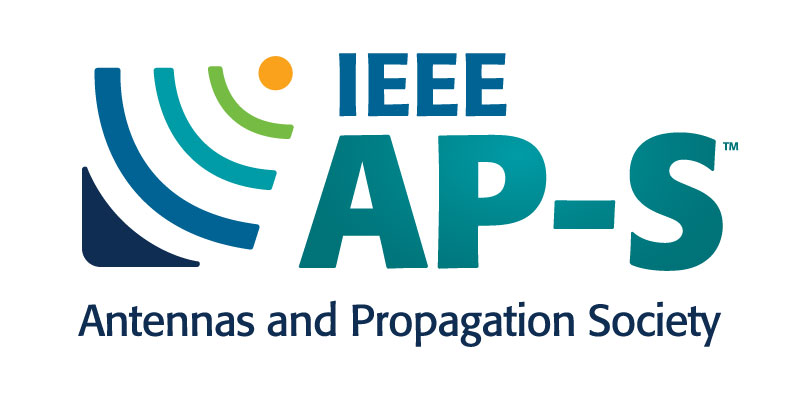

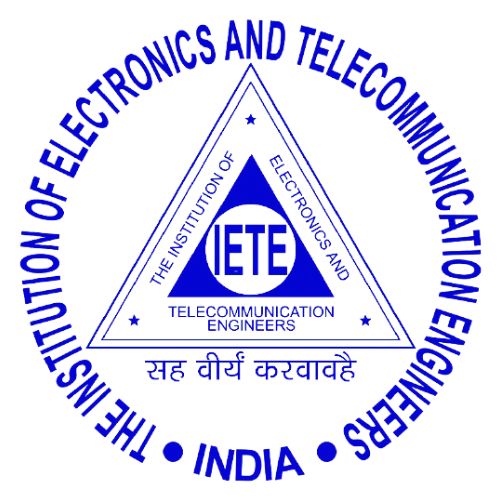
2025 IEEE Wireless, Antenna & Microwave Symposium
WAMS 2025
June 5-8, 2025
Kancheepuram, Chennai
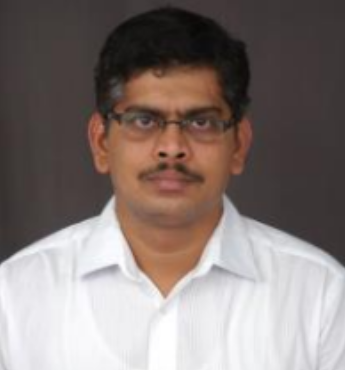
Dr. Sravan Kumar Sagi
Scientist/Engineer-G and Group Director SatCom & Navigation Antenna Group/Antenna Systems Area, SAC/ISRO, Ahmedabad
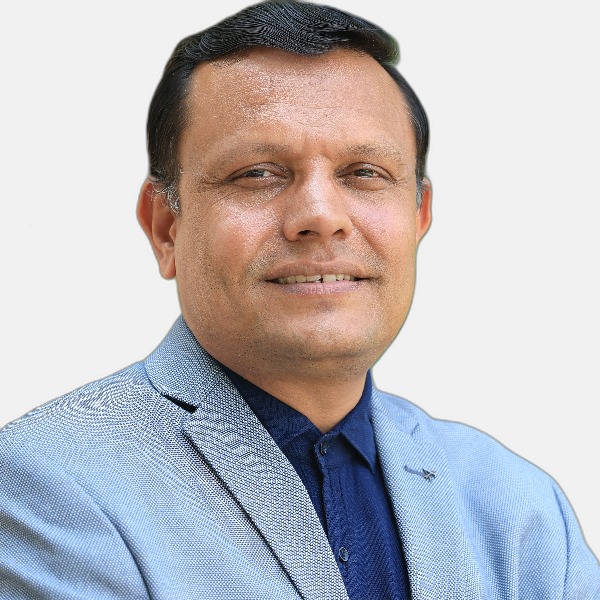
Prof. (Dr.) Dhaval Pujara
Director, School of Technology, Pandit Deendayal Energy University, Gandhinagar, Gujarat
About the Speakers and the Talk

Dr. Nasimuddin
Institute for Infocomm Research, Singapore
Title of Talk:
Advancements in Circularly Polarized Antennas for Next-Generation Communication Systems
Abstract:
This talk provides an in-depth exploration of the latest advancements in compact and wideband circularly polarized (CP) microstrip antennas, with a special emphasis on recent breakthroughs in metasurface-based CP antenna technologies. The session will cover novel design methodologies and innovations that are transforming antenna performance, particularly in the context of emerging wireless applications. By incorporating metasurfaces into antenna architectures, substantial improvements in key performance metrics—such as gain, axial ratio bandwidth, and miniaturization—are achieved, while preserving superior CP radiation characteristics. These advancements enable next-generation antennas with broader operational bandwidths, making them crucial for modern communication systems, satellite communications, and high-performance wireless technologies. The talk will provide a comprehensive understanding of how these cutting-edge techniques are reshaping CP antenna design and driving the evolution of next-gen wireless infrastructure. Additionally, the session will delve into detailed applications of CP antennas, highlighting their growing importance across a wide range of industries.
Short Bio:
Dr. Nasimuddin (M’2003-SM’2009) earned his M.Tech. and Ph.D. from the University of Delhi in 1998 and 2004, respectively. He served as a Senior Research Fellow at the University of Delhi from 1999 to 2003 and as an Australian Postdoctoral Research Fellow at Macquarie University from 2004 to 2006. Currently, Dr. Nasimuddin is a Principal Scientist at the Institute for Infocomm Research (I2R), A*STAR, Singapore. A prolific researcher with over 255 published papers, Dr. Nasimuddin holds three granted patents and has filed four additional patents. He has also edited three books, including a notable volume on microstrip antennas. Recognized among the top 2% of scientists worldwide in 2023 and 2024, he is widely respected for his contributions as a distinguished speaker, associate editor/reviewer, and organizer of special sessions and conferences. Dr. Nasimuddin is a Senior Member of IEEE and IEEE APS. He has received numerous honors, including the URSI Young Scientist Award (2005) and IEEE AP-T/AWPL Exceptional Performance Reviewer certificates. He serves as an Associate Editor for the IEEE Open Journal of Antennas and Propagation (OJAP) and is actively involved with the editorial boards of leading journals in Antennas and Propagation. From 2021 to 2022, he chaired the IEEE Singapore MTT/AP Joint Chapter.

Mr. Puneet Kumar Mishra
ISRO, Bangalore
Title of Talk:
Challenges and Opportunities in Spacecraft Payload RF Characterization
Abstract:
This talk provides an in-depth exploration of the latest advancements in compact and wideband circularly polarized (CP) microstrip antennas, with a special emphasis on recent breakthroughs in metasurface-based CP antenna technologies. The session will cover novel design methodologies and innovations that are transforming antenna performance, particularly in the context of emerging wireless applications.
By incorporating metasurfaces into antenna architectures, substantial improvements in key performance metrics—such as gain, axial ratio bandwidth, and miniaturization—are achieved, while preserving superior CP radiation characteristics. These advancements enable next-generation antennas with broader operational bandwidths, making them crucial for modern communication systems, satellite communications, and high-performance wireless technologies.
The talk will provide a comprehensive understanding of how these cutting-edge techniques are reshaping CP antenna design and driving the evolution of next-gen wireless infrastructure. Additionally, the session will delve into detailed applications of CP antennas, highlighting their growing importance across a wide range of industries.
Short Bio:
Mr. Puneet Kumar Mishra earned his M.Tech (RF & Microwave) from IIT Roorkee in the year 2004. Since 2004 he is with U R Rao Satellite Centre, Bangalore. He has rich experience of RF characterization of 51 Satellites, 350+ antennas and radomes. He has indigenously developed C-Band, Ku-Band and Ka-Band Compact range feeds to meet various requirements of ISRO’s satellite program.
He has played a pivotal role in establishing satellite level EMC facility and Asia’s largest Magnetic Field Measurement Facility. He has conceived and conceptualized World’s first compact range with 10 m quiet zone going to be commissioned in 2025. Presently, he is Heading Electrical Integration-3 of Section of U R Rao Satellite Centre, ISRO, India.
He has received IETE-IRSI Young Scientist Awards (2012), ISRO Young Scientist Award (2013), ASI-ISRO Space Gold Medal (2014), GE Foundation Award for Academic Excellence and Leadership (2002-2004), IEEE MGA Achievement Award (2017) and 8 best paper awards.
He is a passionate volunteer and served Bangalore Section at various capacities including Chair 2020 and India Council as Vice Chair and Secretary. Presently he is serving as the Deputy Project Director (Integration) of Venus Orbitor Mission and ResourceSat-3S/3SA spacecraft.
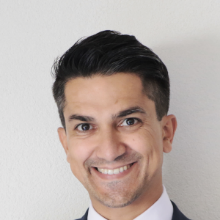
Dr. Nelson J. G. Fonseca
IEEE Fellow
Title:
Recent Advances in Beamforming Techniques and Technologies Applied to Millimeter-Wave Multiple Beam Antennas.
Abstract:
Recent developments in both terrestrial and non-terrestrial networks are focused on multiple beam antenna systems to increase data rates and to provide more flexibility in resource allocation. Some synergies between space and terrestrial systems are emerging as the fifth generation (5G) of wireless systems introduce millimeter-wave frequencies for short range and indoor applications. This provides a unique opportunity for transfer of technology, as requirements for satcom user terminals and cell tower antennas present some similarities. While phased array antennas are getting a great deal of attention, their cost still remains high for mass market applications and alternative solutions based on simpler beamforming techniques are being considered. These solutions are also of interest in radar systems and microwave instruments combining high resolution and wide angular field of view.
This talk will review recently proposed beamforming techniques and technologies, extending the capabilities of known concepts including seminal contributions such as the Butler matrix and the Luneburg lens. A comparative discussion will also be provided, addressing the respective advantages and limitations of the presented techniques.
Short Bio:
Nelson J. G. Fonseca (IEEE Fellow) received the M.Eng. degree from Ecole Nationale Supérieure d’Electrotechnique, Electronique, Informatique, Hydraulique et Télécommunications (ENSEEIHT), Toulouse, France, in 2003, the M.Sc. degree from the Ecole Polytechnique de Montreal, Quebec, Canada, also in 2003, and the PhD degree from Institut National Polytechnique de Toulouse – Université de Toulouse, France, in 2010, all in electrical engineering.
He currently works as Innovation Manager for Anywaves, Toulouse, France, contributing to the development of their custom space-segment antennas portfolio. He is also the founding director of 3SPACE Innovation, Paris, France, a startup developing novel ground-segment and terrestrial wireless communication antenna systems. His research interests include multiple beam antennas for space missions, beamformer theory and design, ground terminal antennas and novel manufacturing techniques. He has authored or co-authored more than 320 papers in peer-reviewed journals and conferences, and has over 50 patents issued or pending.
Dr. Fonseca is currently serving as Associate Editor for the IEEE Transactions on Antennas and Propagation and for the IET Microwaves, Antennas and Propagation. He is also a Topic Editor for the IEEE Journal of Microwaves. He served as Associate Editor for the Transactions on Microwave Theory and Techniques from 2020 to 2022, and was co-Guest Editor of two focused issues of the IEEE Microwave Magazine in 2022 and 2023. He served as Vice-Chair of the newly founded MTT-S Technical Committee on Microwave Aerospace Systems (TC-29) from 2020 to 2021 and as Chair from 2022 to 2023. He served as TPC Co-Chair of the 18th European Conference on Antennas and Propagation (EuCAP2024) and is currently serving as Vice-Chair of the 19th European Conference on Antennas and Propagation (EuCAP2025). He received several prizes and awards, including the Best Applied Technology Antenna Paper Award at EuCAP 2022 and the 2024 IEEE Journal of Microwaves Best Paper Award.

Dr. Sravan Kumar Sagi.
Scientist/Engineer-G and Group Director SatCom & Navigation Antenna Group/Antenna Systems Area, SAC/ISRO, Ahmedabad
Title of Talk:
GNSS Antenna Systems for Space & Ground Applications
Abstract:
Global Navigation Satellite Systems (GNSS), both in space and on the ground, play a crucial role in our daily activities. This talk introduces the antenna requirements essential for GNSS systems, along with an overview of their key characteristics. A brief discussion on global navigation systems will be provided, followed by a focus on ISRO’s progress in the navigation domain, including systems like GAGAN and NAVIC.
The evolution of GNSS antenna systems will be covered, highlighting the transition from dual-band (L5/S) to tri-band (L1/L5/S) and quad-band (L1/L2/L5/S) configurations. In addition, navigation systems based on the pseudolite method will be briefly introduced.
The session will also touch upon future navigation technologies, such as LEO-based Position, Navigation, and Time (PNT) systems. Finally, the talk will highlight recent developments in precision GNSS receiver antennas at SAC/ISRO, emphasizing advancements made in antenna design for improved navigation performance.
Short Bio:
Dr. Sravan Kumar Sagi brings over 25 years of experience in the design and development of communication and navigation satellite antennas, ground terminal antennas, and associated passive waveguide components. He currently holds the position of Scientist/Engineer-G and serves as the Group Director of the SatCom & Navigation Antenna Group within the Antenna Systems Area at SAC/ISRO, Ahmedabad.
Dr. Sagi earned his M.E. in Electronics from IIT Roorkee (1997–1999) and his B.E. in Electronics and Communication Engineering from Andhra University (1993–1997). He joined Space Applications Centre (ISRO) in 1999 and has since contributed significantly to a range of ISRO missions, notably serving as Deputy Project Director (Antennas) for GSAT-16, IRNSS, and GISAT.
His technical contributions span across various landmark antenna systems, including the Shared Aperture Helical Circular Array Antenna (L5 & S-band) for IRNSS, Dual Gridded Shaped Reflector Antennas at C-band for GSAT missions, Ku-band Phased Array Antennas for GISAT, and Triband L1/L5/S-band antennas for second-generation IRNSS satellites. He has also contributed to Ka-band dual reflector antennas, multi-layer patch arrays, frequency selective sub-reflectors, and multiple beam antenna feeds.
Dr. Sagi has published numerous papers in leading journals and conferences and holds two granted patents. His work has been recognized with prestigious honors, including the ISRO Young Scientist Merit Award (2008) and ISRO Team Excellence Awards in 2010 (for the GAGAN antenna system) and 2015 (for contributions to the NAVIC payload).

Prof. (Dr.) Dhaval Pujara
Director, School of Technology, Pandit Deendayal Energy University, Gandhinagar, Gujarat
Title of Talk:
The Art of Writing a Research Paper
Abstract:
Writing a research paper is not merely a technical exercise. It is an art that combines clarity, originality, and paper structure to effectively communicate scientific work. This talk aims to explain the process of research paper writing for engineering students and research scholars. From understanding what constitutes a good research paper, and avoiding common mistakes that lead to rejection, to mastering the nuances of academic style, grammar, and citation practices, the session offers comprehensive guidance. Emphasis will be placed on enhancing the impact of abstracts, titles, figures, and overall presentation. Practical tips on improving readability, maintaining consistency, and ensuring originality will also be shared. The session will empower participants to confidently navigate the publication process and elevate the quality of their scientific writing.
Short Bio:
Dhaval Pujara received a BE degree in Electronics Engineering, an MTech degree in Electronics & Communications Engineering (Microwaves & Radar) from the Indian Institute of Technology (IIT), Roorkee, and a Ph.D. degree from Nirma University. During the years 2007-2009, he was deputed to the Space Applications Centre (SAC), Indian Space Research Organization (ISRO), Ahmedabad, India to research, ‘Antennas for Satellite Applications.
After serving in industry and Government Engineering College for a short stint, Dr. Pujara joined Nirma University, Ahmedabad where he served for almost twenty-five years in several key positions. These include the founder Director (Research and Innovation), Dean (Faculty of Doctoral Studies and Research), Deputy Director (Academic Development and Research Cell), Mentor (Centre for Quality Assurance and Academic Development), Head (Department of Electronics & Communication Engineering), and the IQAC Coordinator.
Currently, Dr. Dhaval Pujara is serving as the Director, School of Technology, Pandit Deendayal Energy University (PDEU), Gandhinagar. Additionally, the Government of Gujarat appointed him as the Independent Director of the Dakshin Gujarat Vij Company Limited (a subsidiary company of Gujarat Urja Vikas Nigam Limited)
Dr. Pujara has wide teaching experience at both the UG and PG levels. In the last two decades, Dr. Pujara took many initiatives in teaching and research. A few noteworthy initiatives include the setting up of a Central Instrumentation Centre, Alumni Sponsored Laboratory, ICT-based portals for doctoral students and placements, drafting of many academic policies, implementation of a three-tier Academic Audit system, faculty & staff development programs, schemes for awards and incentives, etc. He also played an important role in coordinating many key MoUs with R&D organizations/industries.
Dr. Pujara has supervised seven Ph.D. theses and more than twenty-five master dissertations. He has worked on several funded projects, testing assignments, and many training programs for professionals. Prof. Dhaval Pujara was awarded the ‘Best Engineering College Teacher’ of the Gujarat state by the Indian Society for Technical Education (ISTE) in the year 2004 for his outstanding contribution to the academic community and the students. He also received the ‘Young Scientist Award’ in the year 2011 by the International Union of Radio Science (URSI). In the year 2015, he has been awarded IETE – Smt. Ranjana Pal Memorial Award for his significant contribution to RF & Antennas. He has been also awarded as the Best Professor of the Institute of Technology, Nirma University for the year 2015. He also received a prestigious US Fulbright Fellowship in the year 2016 and visited several Universities in the USA. In 2017, he was selected for the award of ‘Academic Excellence’ by the Higher Education Forum, Mumbai. In 2022, he received a ‘Recognition Award’ for outstanding leadership from the Wireless, Antennas, and Microwave Society, India. He is also a recipient of the IEEE APS TICRA grant. In the year 2024, he was awarded ‘Dr. Sudhakar Rao National Award’ for Contribution in RF and Antenna Engineering, by the Institution of Electronics and Telecommunication Engineers (IETE).
Prof. Pujara is a senior member of IEEE, USA, a life member of ISTE, a life member of the Institute of Electronics and Telecommunication Engineers (IETE), New Delhi, and a life member of the Institute of Engineers, India. He has more than 100 journal/conference papers to his credit. Prof. Pujara has visited several countries for academic and research work.
Dr. Pujara has been invited by many reputed institutes, and industries to conduct the workshops/lectures. By now, he has delivered more than 300 invited talks on a variety of topics, including research, teaching skills, life skills, etc. He has a deep interest in areas like Quality in Higher Education, Accreditation, University Rankings, Outcome-based Education, etc.
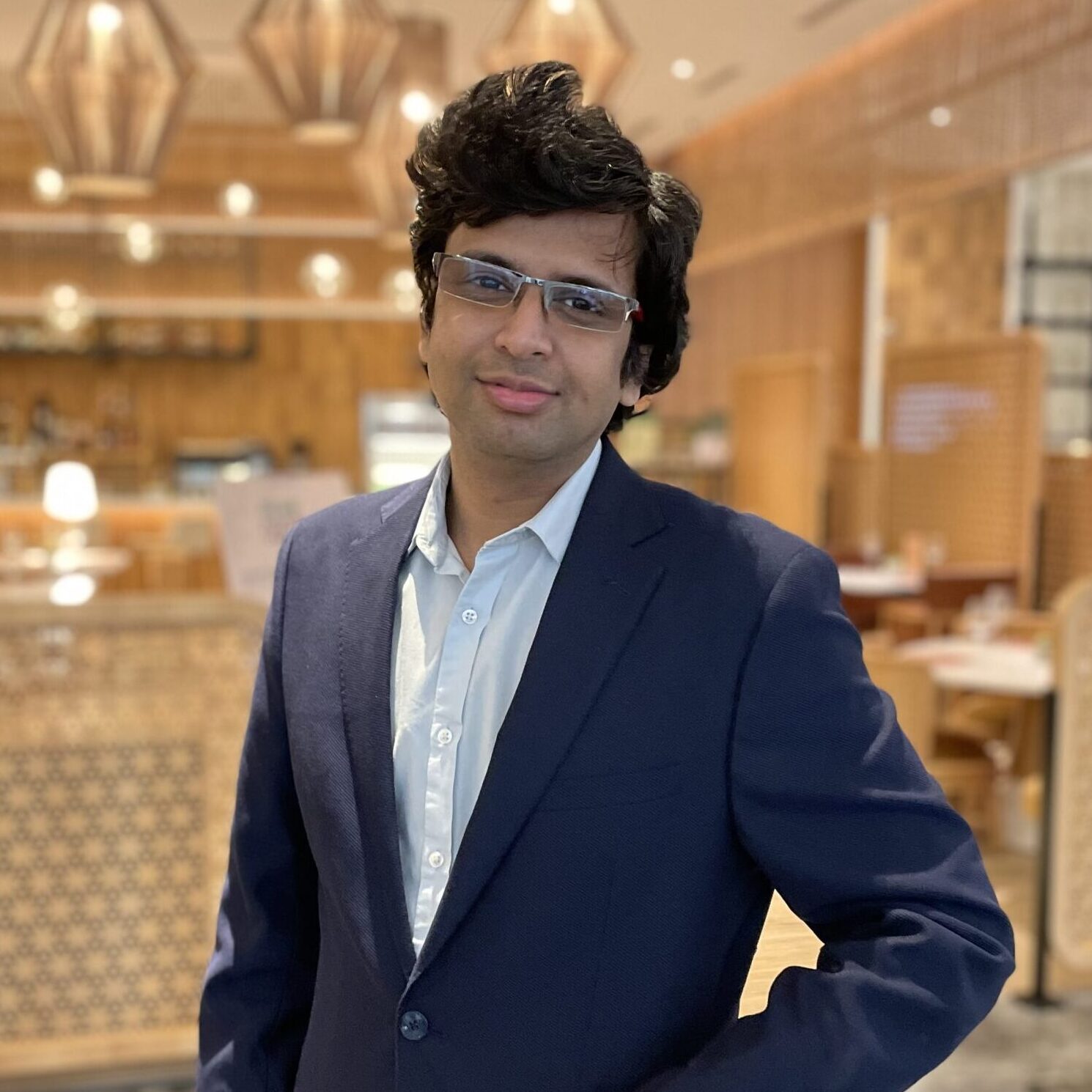
Dr. Siva Sai Krishna Puranam
Industry Process Consultant with Dassault Systems
Title of Talk:
From Concept to Creation: Antenna Design Through Comprehensive Simulations with CST
Abstract:
Antennas are fundamental to modern communication systems, forming the core of wireless technologies across a wide range of applications. Achieving efficient and reliable antenna performance requires a streamlined design workflow – from initial concept through to final implementation, including antenna placement and full array configuration. CST Studio Suite offers a powerful set of simulation tools to support this end-to-end design process. This presentation will guide participants through the complete antenna design journey using CST, starting from single-element modeling to the synthesis and optimization of complex antenna arrays. Additionally, a brief introduction to radome design will be provided, demonstrating how CST enables the analysis of antenna performance in realistic, installed environments.
Short Bio:
Dr. Siva Sai Krishna Puranam is an Industry Process Consultant with Dassault Systems. He holds a PhD degree in Electrical Engineering with focus on Antenna Design from the University of Minnesota, Twin Cities, Minneapolis – USA. Prior to his PhD work, he worked as an Electrical Engineer with Seagate Technology in the USA in the analysis and validation of the electronic circuits used in Hard Disk Drives. His areas of interests are in the domains of Antenna Array Design – simulation and fabrication, High Power Microwave Device Simulations and in Computational Electromagnetics.